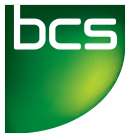Applied Cold Reading for Software Practitioners
Using the ancient methods of cold reading can we ask probing questions while building rapport, trust and credibility.
75 minute workshopAbstract
As software developers working with non-technical stakeholders we often find ourselves with two conflicting goals.
On one hand we need to establish trust and credibility. The stakeholder needs to be confident that we know what we are doing and that they can trust us to deliver.
On the other hand we need to ask many questions about the stakeholder's context and area of expertise. Sometimes this can undermine their confidence in us. They may feel that as experts we should already have the answers.
For centuries the tools of cold reading have been used to convince people of supernatural knowledge. It is a simple system that is easily learned, yet it is surprisingly effective.
Applied Cold Reading (ACR) make practical use of these well established methods in areas such as sales and negotiations.
In this session some of the techniques will be introduced, explained and practiced for improving communication on software projects.
The tools are a set of questioning strategies that discreetly seek out information while building rapport. Participants divulge the information so easily that they don't even realise they are doing it.
Then we will ask if these tools have any practical value for software practitioners. The focus is on techniques for communicating and effectively asking questions.
Audience background
No skills or knowledge are required, only a desire to improve communication and the flow of communication.
Any role that involves direct communication with users will find the content useful. This includes architects and those working on agile teams.
Benefits of participating
Participants will learn some simple strategies that can easily be applied to improve communication with non-technical stakeholders.
The key takeaway is an understanding of the importance of how a question is delivered. The techniques are presented as templates for asking questions and building rapport.
Participants will be introduced to ideas from the following books:
* The Full Facts of Cold Reading by Ian Rowland
* "Pre-Suasion: A Revolutionary Way to Influence and Persuade" by Robert Cialdini
* "Agile Methods The Good, the Hype and the Ugly" by Bertrand Meyer
* "Adrenaline Junkies and Template Zombies: Understanding Patterns of Project Behavior" by Tom DeMarco, et al.
Materials provided
A4 handouts with a concept map and suggested reading.
Process
The session will begin with a light-hearted mock cold reading. The presenter will pretend to be given knowledge about the attendees by a curious strange creature: the Mythical Man-Moth.
Then Applied Cold Reading is introduced from a historical perspective. The basic goal is considered: to turn a question into a statement that will generate agreement and establish common ground.
Then 5 Cold Reading Techniques are considered:
* Setting the mood - How the context and framing can be used to make communication more effectiveness.
* Vanishing Negative - An ambiguous negative question is asked. The response is then built upon to establish agreement and expand further.
* Barnum Statements - Saying something very generic that people receive as very specific to them.
* Jacques Statements - Finding shared experience based on the common rites of passage and typical problems many of us encounter.
* The Win-Win Game - What do you do with a negative response? How can you turn it into a win?
Each technique is introduced and followed by an exercise where groups consider a situation where a difficult needs to be asked. Through role-playing they use the technique in order to discretely seek out knowledge.
To provide background detail relevant books are introduced for the following topics:
* Setting the mood - "Pre-suasion: A Revolutionary Way to Influence and Persuade"
* Barnum Statements - "Agile Methods The Good, the Hype and the Ugly"
* Jacques Statements - "Adrenaline Junkies and Template Zombies: Understanding Patterns of Project Behavior"
Finally the framed questions are reviewed. Do they participants see the framing as useful? Are there potential pitfalls? Could they be considered unethical?
The conclusion provides a brief plenary with a recap of the session contents. A suggestion is made for improving small talk at the conference.
Detailed timetable
00:00 - 00:05 - Introduction
00:05 - 00:10 - What is Applied Cold Reading
00:10 - 00:25 - Setting the Mood
00:25 - 00:40 - The Vanishing Negative
00:40 - 00:50 - Break
00:50 - 01:05 - Barnum Statements
01:05 - 01:20 - Jacques Statements
01:20 - 01:30 - The Win-Win Game
01:30 - 01:40 - Review and Discussion
00:40 - 01:45 - Conlusion
Outputs
Participants will acquire new strategies for seeking out information and building rapport.
They will have practiced the strategies through role playing.
In the conclusion, participants will be given a suggestion for using the method for improving their small talk with the new people they meet at the conference.
History
This is an entirely new presentation that I have never delivered before.
I have no experience as a real cold reader, but I have found reading on the subject useful for workshops and interviews.
I have successfully used these strategies in my work.
Presenters
- Ged Byrne
Endava
